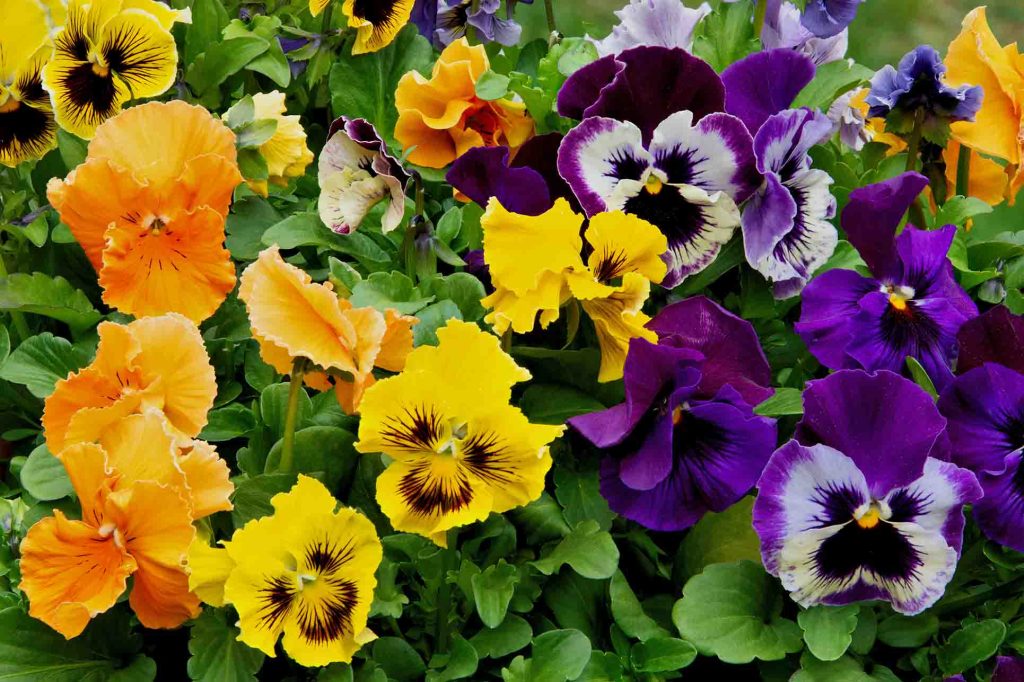
Welcome to the wonderful world of pansies! If you’re looking for an easy way to add color and texture to your garden, look no further than these lovely flowers. Often appreciated for their resemblance to smiling faces, pansies are reliable bloomers that will delight you and your neighbors! Found in nearly every shade of the rainbow (and more!), pansies bring both versatility and beauty to your outdoor space! Join the Tuxedo team as we explore these delicate, gorgeous flowers!
What Are Pansies?
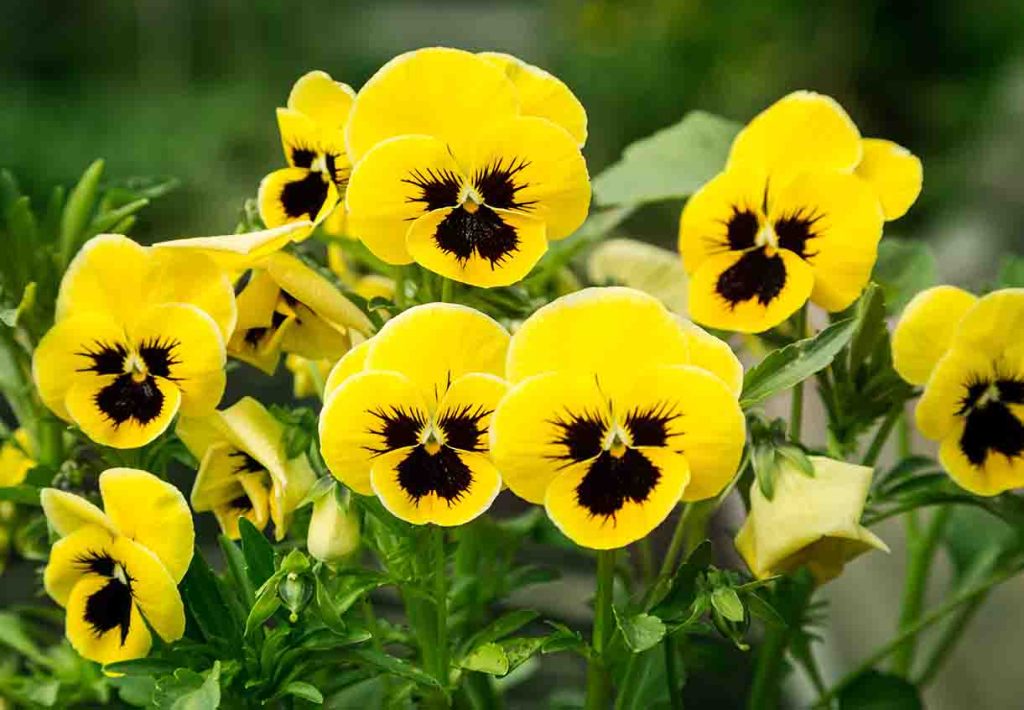
Pansies are a member of the Viola genus, which contains over 500 different species. These flowers were cultivated for gardens and hybridized with other various flowers in the Viola genus. In fact, pansies are often referred to and mistaken for violets, the most well-known flower in the genus. You can differentiate a true garden pansy from a violet by identifying 4 upward-facing petals, with only 1 downward-facing petal; violets have 2 upward-facing petals and 3 downward-facing petals.
Pansies are thought to be native to Europe and Asia, although they’re now grown all over the world. Pansies were first introduced to North America in the early 1800s and have been a popular choice for gardens ever since. They have been historically viewed and used as flowers of remembrance, as their name is derived from the French word “pensée” (as in the English “pensive” or “thoughtful”). The etymology of “pansy” is also where this flower gets the nickname “humble violet.”
How To Identify Pansies

Pansies come in a variety of colors, shapes, and sizes. You can recognize them by their large flowers, which have 5 petals that form a cup-like shape. Common colors boasted by pansies include yellow, red, blue, purple, orange, and more! The middle of the flower (especially in pansies cultivated for gardens) is usually blotchy and darker in color than the edges, while each individual petal has veins running along it that stem out from the center of blotchy colors.
As stated previously, one of the most unique characteristics of pansies is the direction of the petals, with 4 petals pointing up and 1 pointing down. Petals are typically overlapping and form a round bloom with cupped edges. This will require a keen eye to spot, but it is one of the defining characteristics of pansy flowers. Most garden pansies will even have tiny hairs on the delicate petals that get longer toward the stem.
Key Characteristics:
- Many colors and sizes
- Delicate, cup-like petals
- 4 upward-facing petals and 1 facing down
- Blotchy, face-like colorations in center
- Growth in gardens between 6 and 9 inches
- Round, overlapping blooms in both spring and fall
Where & When Do Pansies Grow?
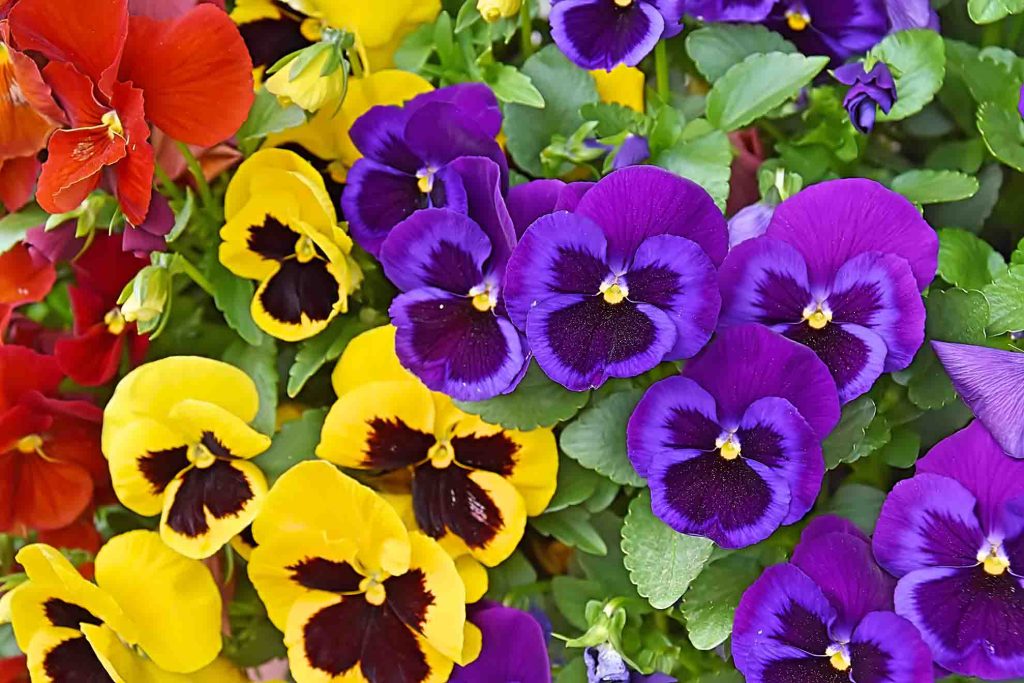
When it comes to garden pansies (as opposed to wild varieties), they are typically annual flowers that occasionally behave as short-lived perennials by overwintering. Pansies are some of the hardiest blooms you can find, often being able to survive frosts and winters in warmer climates. They perform best in cooler climates, which makes them great for northern Utah gardeners who experience both cold and warm temperatures year-round. Additionally, pansies require very little maintenance and will thrive in most soil types, as long as the soil is well-drained and receives plenty of direct sunlight.
Pansies have their showiest blooms in cooler seasons/temperatures, typically between 40 and 60 degrees Fahrenheit. In regions that are warmer, blooms may continue all the way through winter, which is why some people view these flowers as perennial. Pansies do not tolerate high heat and humidity well, but they are able to tolerate a certain level of higher temperatures and drought conditions. It is crucial that you plant your pansies in the appropriate seasons, or else they will quickly wilt away in the summer heat.
How To Plant Pansies
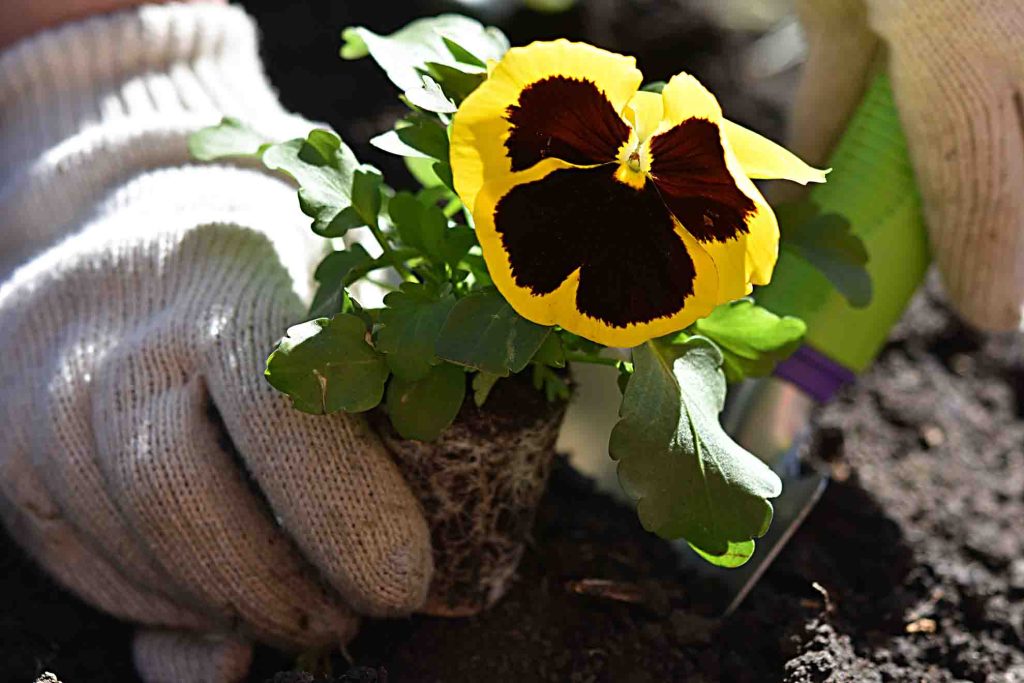
The hardy nature of pansies makes them very easy to plant and care for, making them a great flower choice for novice gardeners. When planting pansies, it is important to choose a sunny spot that has well-drained soil (to be even more redundant on the matter). To increase drainage, you can add compost or other organic matter to the soil before planting. When it comes to spacing pansies, they do not require much room. Aim for 6 to 10 inches of space between plants when possible. Make sure that the holes you dig for your pansies are deep enough (about ¼ inch) so that the crowns are slightly below the soil surface. Then, simply add the plants and tamp down the soil lightly around them. It is ideal to water your pansies thoroughly after planting, but not more than that. Too much water can drown young pansy plants and lead to root rot or other diseases, which pansies are notorious for contracting if they are neglected.
Key Takeaways:
- Purchase pansies already growing in nursery pots and transfer to the garden.
- Plant in cooler (but not freezing) temperatures in early spring and fall.
- Plant pansies when temperatures are between 40 and 60 degrees Fahrenheit.
- Space pansies 6 to 10 inches apart for the best and showiest blooms
- Make sure pansies receive at least 6 hours of direct sunlight (morning is best).
- Do NOT overwater in order to prevent diseases from plaguing your pansies.
Why You Should Plant Pansies
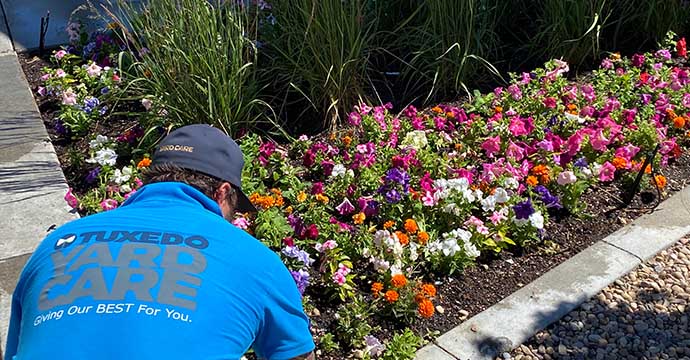
Pansies are one of the most beautiful and resilient flowers you can find, especially in northern Utah gardens! They require minimal effort from gardeners (infrequent watering and fertilizing requirements), and they also produce vivid blooms that last when many other colorful flowers have wilted or died. These colorful flowers make a wonderful addition to any garden, and you can even pair them with other herbaceous plants to add additional layers of texture and color such as the autumn-favorite mums! Planting pansies is also a great way to attract beneficial pollinators like bees, butterflies, and hummingbirds!
So, if you are looking for an easy-to-care-for flower that will bring life and beauty to your northern Utah garden, you can’t go wrong with pansies! With just a little TLC and proper planting techniques, these cheerful flowers will thrive in your space for years to come. Happy gardening, Utahns!



